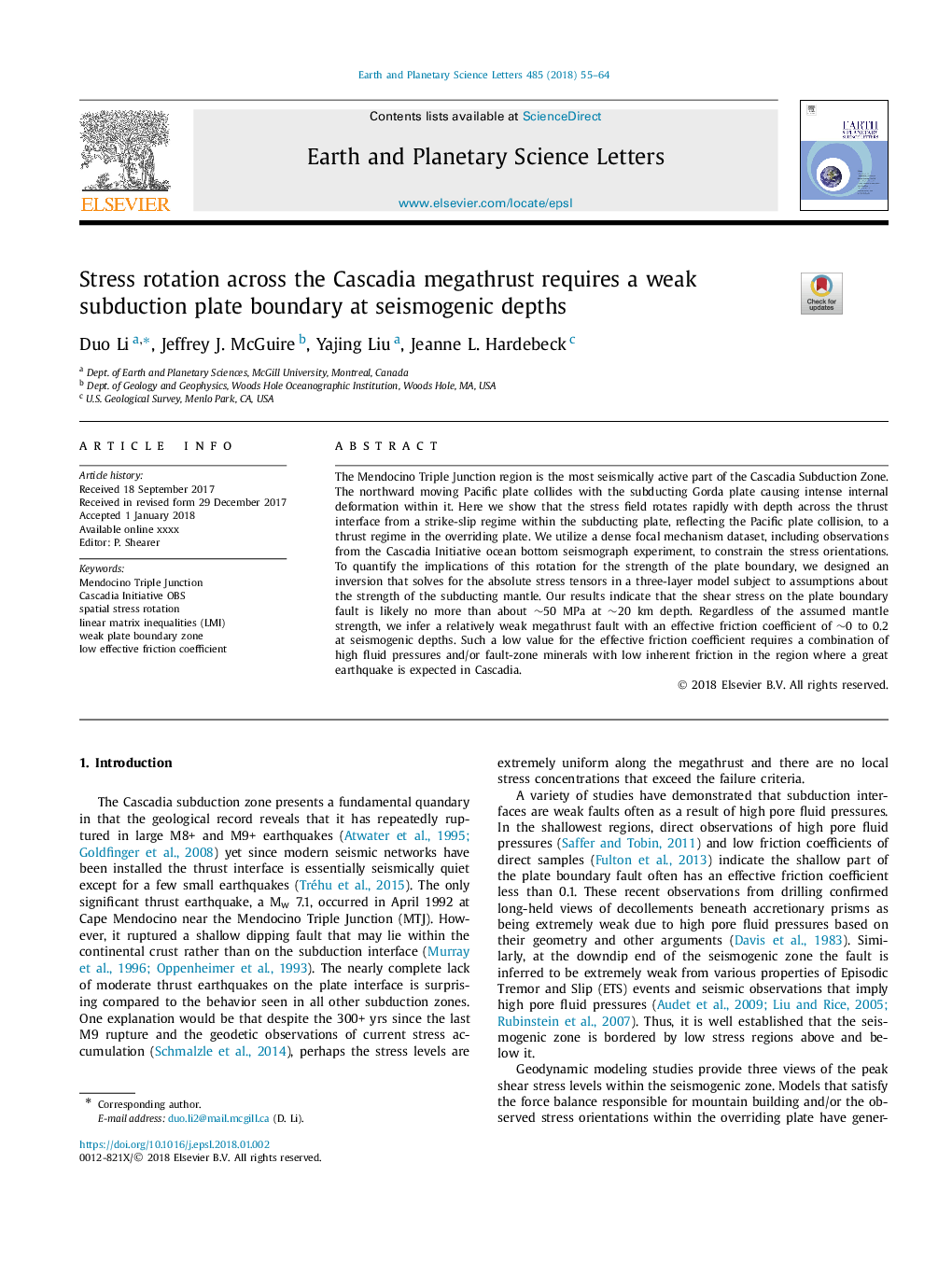| Article ID | Journal | Published Year | Pages | File Type |
|---|---|---|---|---|
| 8907121 | Earth and Planetary Science Letters | 2018 | 10 Pages |
Abstract
The Mendocino Triple Junction region is the most seismically active part of the Cascadia Subduction Zone. The northward moving Pacific plate collides with the subducting Gorda plate causing intense internal deformation within it. Here we show that the stress field rotates rapidly with depth across the thrust interface from a strike-slip regime within the subducting plate, reflecting the Pacific plate collision, to a thrust regime in the overriding plate. We utilize a dense focal mechanism dataset, including observations from the Cascadia Initiative ocean bottom seismograph experiment, to constrain the stress orientations. To quantify the implications of this rotation for the strength of the plate boundary, we designed an inversion that solves for the absolute stress tensors in a three-layer model subject to assumptions about the strength of the subducting mantle. Our results indicate that the shear stress on the plate boundary fault is likely no more than about â¼50 MPa at â¼20 km depth. Regardless of the assumed mantle strength, we infer a relatively weak megathrust fault with an effective friction coefficient of â¼0 to 0.2 at seismogenic depths. Such a low value for the effective friction coefficient requires a combination of high fluid pressures and/or fault-zone minerals with low inherent friction in the region where a great earthquake is expected in Cascadia.
Related Topics
Physical Sciences and Engineering
Earth and Planetary Sciences
Earth and Planetary Sciences (General)
Authors
Duo Li, Jeffrey J. McGuire, Yajing Liu, Jeanne L. Hardebeck,
